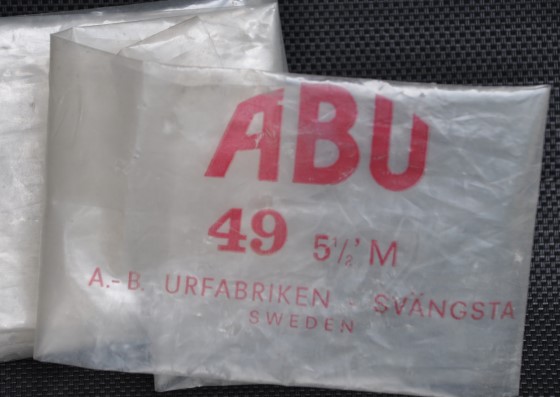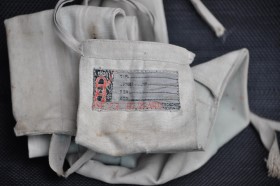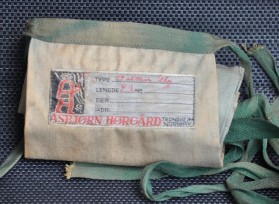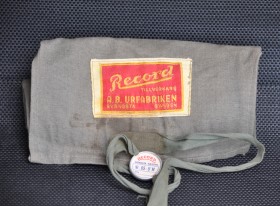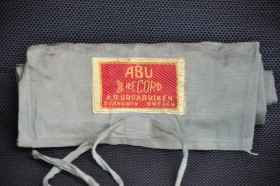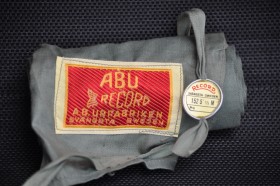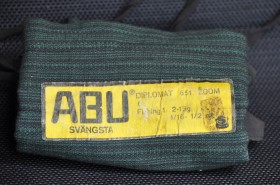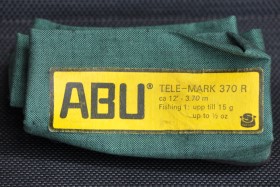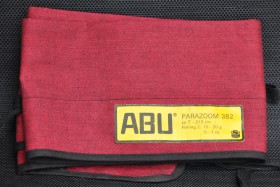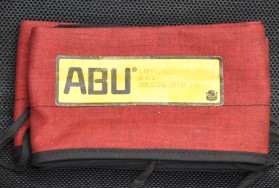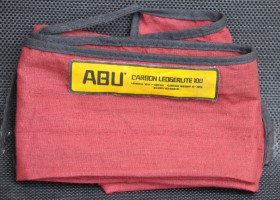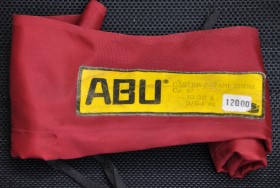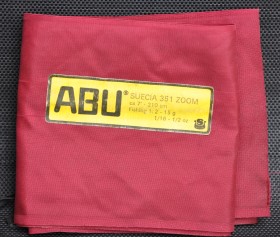Record/ABU Rod Covers
To be protected form the elements, rods were generally covered to protect from rain, dust, and damage from physical transportation.
These covers for some hand-built split cane rods from around the world were even cased in timber boxes.
ABU first known in house constructed rods were made of steel and packaged in plastic.
Very easily subjected to wear, these did not stay the cover of choice for long and cloth bags became de riguer!
Whilst ABU did not make split cane rods they offered for a very short time Horgard rods from Norway which were sold merely within their cloth bag with a nice little touch of a badge and label for rod type and model as well as owner's name.
During the Record stage of A.B.Urfabriken equipment production, several shades of green/grey cloth bags were used as rod bags and these were adorned with 2 different types of embroiderery in a fetching red and gold livery.
The first rarer Record example
First ABU examples
Next the ABU example from 60's and 70's were usually Green, then followed by russet coloured bags.
Notice the identification badge became a simple yellow and black adhesive patch, easy pulled from a roll of printed labels.
Various examples from my rods are below.
The later russet coloured bags were of two types, a genuine cloth feeling type and then a very synthetic plastic feeling cloth.
Notice the bags were initially trimmed in a black edging and then this disappeared. All production cost changes one would presume.
With thanks to Keijo from Finland , we can see below this rare rod cover with unusual medallion used in the sixties for only a year or two.
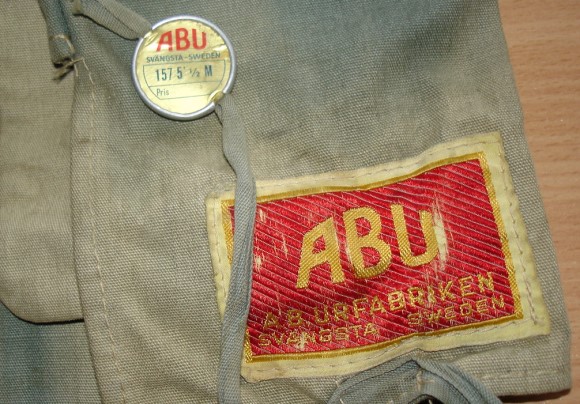

Please advise if you know any more from the beginning of the era to the 80's.
Styles from ABU Garcia varied further.
If you have any others listed above, that are unneeded or doubles in your collection and are available for a reasonable fee, I would be very pleased to hear from you. Particularly any Record rods or Diplomat series, or Safari Fly rod and a Pacific Series boat rod.
